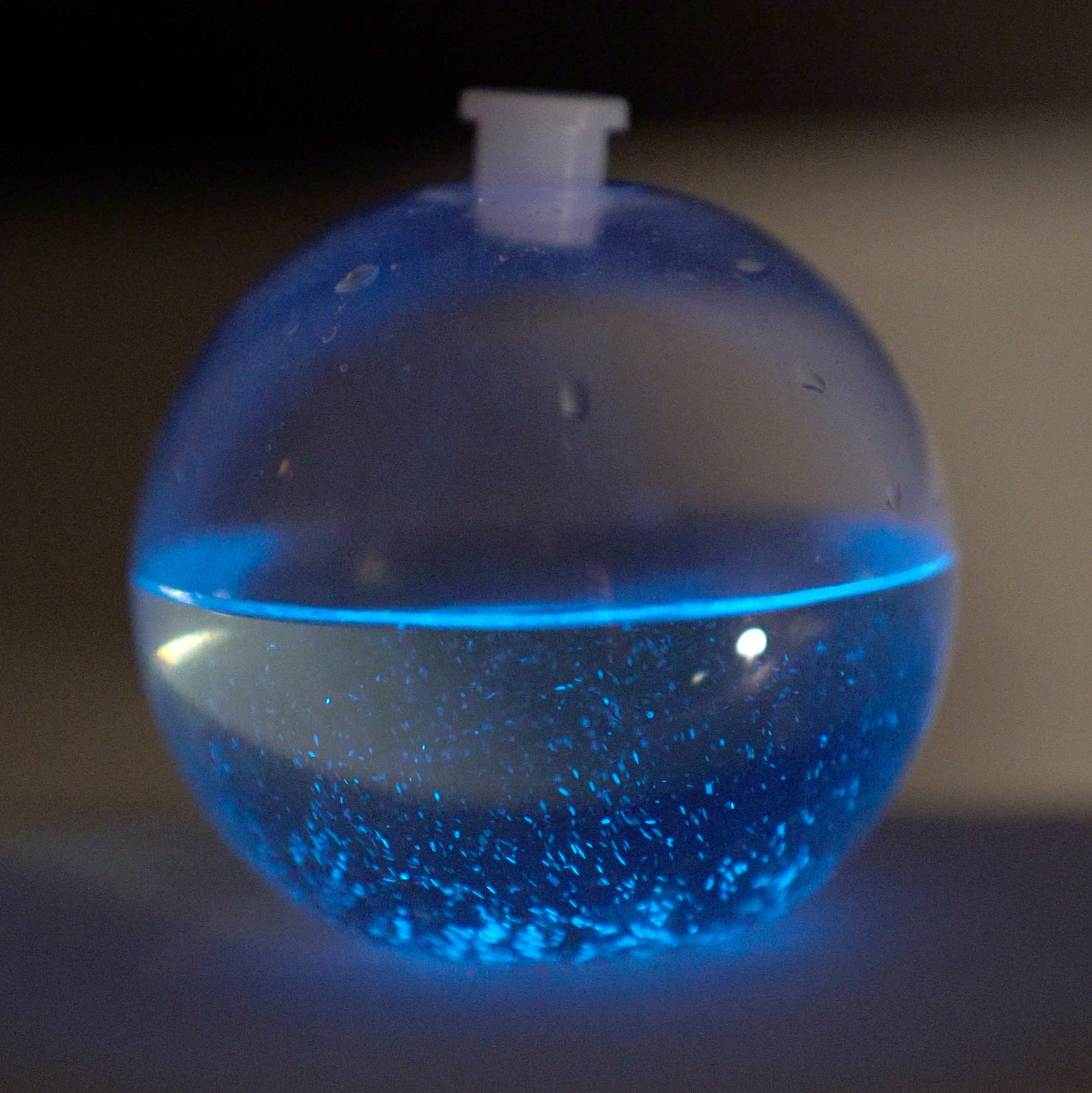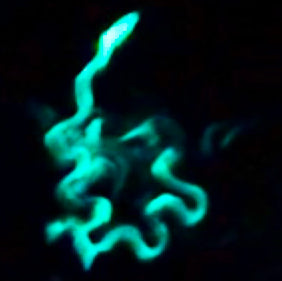All about the Dinos (PyroDinos)

PyroDinos are a marine dinoflagellate named Pyrocystis fusiformis. They are plant-like plankton or phytoplankton. PyroDinos are phototrophic (use sunlight as their main energy source) and can also be classified as single-cell microalgae or simply ‘algae’. Our PyroDinos are grown under LED lights and filtered sunlight on our Algae Farm in San Diego California. One PyroDino cell was isolated off the coast of San Diego in 2009 and from this single cell, all our PyroDinos have been grown.

PyroDinos can be added to a saltwater aquarium or a reef system. They are non-toxic phytoplankton and will be snacks for most aquarium inhabitants. They may also be removed by mechanical filtration.
About Bioluminescence
Bioluminescence is a natural light produced by living organisms. PyroDinos produce bioluminescence as a defense mechanism. PyroDinos are at the base of the ocean’s food web. Predators induce bioluminescence when preying on PyroDinos. It is hypothesized that the light acts as a burglar alarm to attract a larger predator who will eat the PyroDino predator. PyroDinos produce a blue light because blue light wavelengths are more compact and travel more efficiently through water.
About Circadian Rhythm
Like many people, PyroDinos have a circadian clock that helps them discern daytime from nighttime. PyroDinos collect light energy during their ‘day cycle’ and produce bioluminescence during their ‘night cycle’. PyroDinos will not produce light (bioluminescence) during their daytime cycle. Steady changes to their light conditions will change their day and night cycles. They can sustain day cycles up to 20 hours (of light) and should never have less than 8 hours of light in their day cycle.
Changing their day and night cycle (circadian clock) is easy. You will need a LED light, a light/outlet timer and a location that is relatively dark during daytime hours. Program the light timer to provide light during nighttime hours (from 10 to 14 hours of light) and keep the PyroDinos in darkness during the day. You should see changes to their circadian clock (day and night cycles) after a couple of days. After a week the change in their cycle should be complete.

About Photosynthesis
PyroDinos gain the majority of their energy from light. In nature, this would be sunlight and in a Bio-Orb it can be either filtered/indirect sunlight or artificial light (room lighting). Photosynthesis is a process plants use to convert the greenhouse gas CO2 (carbon dioxide) and sunlight into O2 (oxygen) and sugar. During this process which only occurs during their day cycle, PyroDinos take CO2 from their environment and convert it into a usable food source (sugar) for cell metabolism. In doing this they produce life-giving oxygen as a byproduct.
On a global scale, the amount of oxygen produced and carbon dioxide removed from the atmosphere is considerable. Scientists estimate that all the oceans’ phytoplankton, which PyroDinos are a part of, produce up to 70% of the oxygen we breathe. Under this assumption, phytoplankton would be the most significant carbon sink we have. Our most important defense against climate change and leading supplier of life-giving oxygen.

PYRODINOS
LG BIO-ORB
BIO-ORB
DINONUTRIENTS




Comments
Marin Sawa —
Hello,
I’m an academic researcher, writing a book on algal biotechnology and biodesign. Would it be possible to interview and ask a few questions regarding the commercialisation of a bio product such as your Bio-orb?
Best wishes,
Marin
Dr. Marin Sawa
NUAcT Fellow: Biotechnology
Hub for Biotechnology in the Built Environment
School of Architecture, Planning and Landscape
Newcastle University
Room 4.22, Devonshire Building, NE1 7RU
Mobile: +44 (0)777 298 7084
Email: marin.sawa@ncl.ac.uk
https://www.ncl.ac.uk/apl/people/profile/marinsawa.html